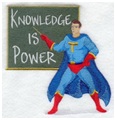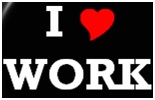|
 |
|
 |
|
|
||
Human resource management
(HRM)
HRM is... The management of people (or human resources) to help achieve an organization’s objectives, particularly customer satisfaction and innovation. The name HRM is sometimes criticized, because people are not a resource but human beings with feelings. So perhaps people management is a more accurate term, but HRM is most commonly used.
HRM is all about... 1. Corporate strategy Employees play a vital part in making a strategy successful. They satisfy customers by being creative, improving product quality and making change work. This is the concern of strategic HRM and is the most important job for an organization’s Human Resource (HR) department – why?
a) every manager is an HR manager Any manager has to get the best results from people and shouldn’t have to rely on the HR department to do this. But managers can still benefit from HR’s advice on vital issues like motivation and empowerment (see point 2).
b) outsourcing Administrative HR activities like pay and recruitment can be carried out by outside companies.
2. Motivation and empowerment HRM must ensure that people are motivated (working hard and effectively) and empowered (taking responsibility for results). The 4 I’s show how it can do this:
Ideology (shared values or corporate culture) The organization must value people and treat them well (not just say it will with clichés like ‘people are our most asset’). Identification People must be proud to work for the organization because they:
Involvement (and communication) HRM must allow people to participate in the decisions affecting their work. Open plan offices help communication but reduce concentration. Information (and learning) HRM must make sure that employees have the right information to do their jobs well. So it must maximize their learning, training and education. People must learn to use their time as effectively as possible (see time management).
3. Recruiting, interviewing and selecting the right
people People must be chosen who are:
4. Pay administration
5. You're fired!
FIRED is an acronym for HRM’s key activities: Fun– creating work that is interesting and varied.
Inducement– giving people fair rewards.
Recruitment – getting the best people. Empowerment – encouraging people to take responsibility for results.
Dignity – valuing people as human beings and a vital part of the organization’s strategy.
Key quotes explained
“Both the man and dollar but in case of conflict the man before the dollar” Abraham Lincoln (American president, pictured right) In the last resort people’s needs must come first. Many organizations preach this philosophy but don’t practise it. “What employees hear is that they’re the firm’s most valuable asset, what they know is they’re the most expendable assets”, Gary Hamel and C.K. Prahalad said in their book, Competing for the Future.
“We build too many walls and not enough bridges” Isaac Newton (English scientist, pictured right) Getting the best from people requires co-operation between them. So organizations, says Sony’s co-founder, Akio Morita, must create a “family-like feeling” with a “feeling that employees and managers share the same fate”. People must talk and listen to each other with empathy and understanding. “To jaw-jaw is always better than to war-war”, Winston Churchill said.
“Treat people as adults. Treat them as partners; treat them with dignity; treat them with respect” Tom Peters (pictured right) and Robert Waterman (pictured right below) from their book, In Search of Excellence.
The best organizations satisfy the human needs of their employees, so they have pride in what they do and perform brilliantly.
Key books
David Packard (pictured right) , The HP Way (1995) The co-founder of the American computer and electronics company, Hewlett-Packard (HP), describes how its success was based on
Lynda Gratton (pictured right), Living Strategy (2000) A living strategy is putting employees at the heart of an organization's purpose. This maximizes employees’ commitment and creativity. (For more detail see Living Strategy in the Business Books section).
|
|
|
||
|
|
||
| Copyright © wisdomtowin.com 2025 All Rights Reserved | ||
|

















